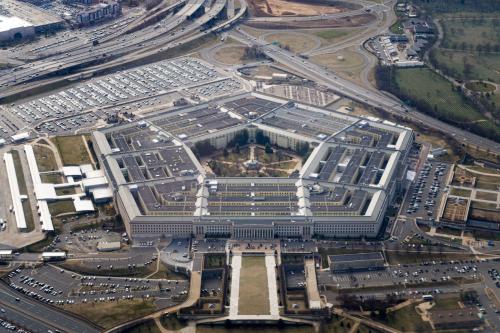Four years ago, President George W. Bush warned of the grave and growing danger posed by rogue regimes that seek to acquire nuclear weapons. “States like these, and their terrorist allies, constitute an axis of evil, arming to threaten the peace of the world.” America, the President made clear in his January 2002 State of the Union address, would do whatever was necessary to defeat this threat: “I will not wait on events, while dangers gather. I will not stand by, as peril draws closer and closer. The United States of America will not permit the world’s most dangerous regimes to threaten us with the world’s most destructive weapons.” While President Bush did not explain how the United States would counter this rising danger, it was soon evident that the Administration believed that preventive military force would have to be at the core of any successful strategy.
The decision to invade Iraq, justified by the need to prevent Saddam Hussein from acquiring weapons of mass destruction, was a clear manifestation of this new strategy. It may well have been the last. The failure to find an active nuclear weapons program or any stockpiles of biological or chemical weapons, combined with the inability to secure the post-Saddam peace, all but rules out future military endeavors of this kind. Because of the disaster in Iraq, gaining an American, let alone an international, consensus in favor of another preventive war will be close to impossible. The Administration, accordingly, has opted for more conciliatory, multilateral negotiating strategies to address the nuclear threats posed by Iran and North Korea, the other two members of President Bush’s “axis of evil.” Despite ritualistic exhortations that “all options remain on the table”, the Administration declined to use force even after it was clear that North Korea was reprocessing spent fuel sufficient for six or more nuclear bombs.
While many will greet the apparent death of preventive force with relief, it would be unfortunate if the entire concept were abandoned. For the problem with the Bush strategy has been less the concept of preventive force itself than its near-unilateral application to achieve very ambitious—perhaps too ambitious—ends. Unilateral, preventive wars of regime change should be relegated to the past. But circumstances will undoubtedly arise in the future in which policymakers will want to have the option of using force preventively—be it to kill terrorists, prevent weapons proliferation, halt genocide, stop the spread of deadly diseases, or deal with other kinds of danger. The proper task, then, is not to bury the concept, but to make it a more limited and a more legitimate tool for addressing evolving security threats.
Contact Project Coordinator Anne Kramer for the full article.


Commentary
The Future of Preemption
December 1, 2005